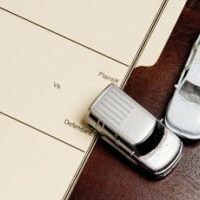NH Car Crash Attorneys Share Winter Driving Tips

Reduce Speed
* When it snows, the NH car crash attorneys at the Law Office of Manning Zimmerman & Oliveira PLLC urge you to use your head – not your feet. Slow down for wet, snowy, or icy conditions; when visibility is poor; or when conditions are changing or unpredictable. Stay alert!
* Slow down when approaching intersections, off-ramps, bridges or shady spots. These are all candidates for developing black ice – a thin coating of clear ice can form on pavement surfaces that may be difficult to see.
* Drivers should allow additional room between their vehicles and others. Winter road conditions often result in longer stopping distances.
* Don’t take chances when pulling out in front of approaching vehicles. Remember, they may not be able to slow down, and you may not be able to accelerate as quickly as on dry pavement.
* Avoid using cruise control in winter driving conditions. You need to be in control of when your vehicle accelerates based on road conditions – don’t let cruise control make a bad decision for you.
Driving Maneuvers
* Stopping on snow and ice without skidding requires extra time and distance. If you have anti-lock brakes, press the pedal down firmly and hold it. If you don’t have anti-lock brakes, gently pump the pedal. Either way, NH car crash attorneys urge you to give yourself plenty of room to stop.
* On snow and ice, go slowly, no matter what type of vehicle you drive. Even if you drive an SUV with four-wheel drive, you may not be able to stop any faster, or maintain control any better, once you lose traction. Four-wheel drive may get you going faster, but it won’t help you stop sooner.
* When you’re driving on snow, accelerate gradually. Avoid abrupt steering maneuvers.
* When you’re driving on snow, ice or wet roads, merge slowly, since sudden movements can cause your vehicle to slide.
* It takes more time and distance to stop your vehicle in adverse weather conditions, so use your brakes carefully. Brake early, brake slowly, brake correctly, and never slam on the brakes.
* Look farther ahead in traffic than you normally do. Actions by other vehicles will alert you to problems more quickly, and give you that split-second of extra time to react safely.
* Avoid distracted driving – texting, eating, handheld devices, etc.
* Winter conditions call for different driving tactics. “When there’s ice and snow, take it slow” is sound advice from the NH car crash attorneys at the Law Office of Manning Zimmerman & Oliveira PLLC.
Safe Travel Around Snowplows
* Don’t crowd the plow. Snowplows plow far and wide – sometimes very wide. The front plow extends several feet in front of the truck and may cross the center line and shoulders during plowing operations.
* Don’t tailgate or stop too close behind snowplows. Snowplows are usually spreading deicing materials from the back of the truck may need to stop or take evasive action to avoid stranded vehicles. If you find yourself behind a snowplow, stay behind it or use caution when passing. The road behind a snowplow will be safer to drive on.
* On multiple lane roads, watch for snowplows operating in either lane.
* Snowplows can throw up a cloud of snow that can reduce your visibility to zero in less time than you can react. Drive smart. Never drive into a snow cloud – it could conceal a snowplow.
* Snowplows travel much slower than posted speeds while removing snow and ice from the roads. When you spot a plow, allow plenty of time to slow down.
* A snowplow operator’s field of vision is restricted. You may see them but they may not see you.
* Plows turn and exit the road frequently. Give them plenty of room.
Trip Preparedness
* Before leaving home, find out about the driving conditions. Safe drivers know the weather, and they know their limits. If the weather is bad, remember, ice and snow, take it slow, or just don’t go.
* Before venturing out onto snowy roadways, make sure you’ve cleared the snow off all of your vehicle’s windows and lights, including brake lights and turn signals. Make sure you can see and be seen. Always buckle up, and remember, when driving in winter, ice and snow, take it slow.
* Give yourself extra time to reach your destination safely. It’s not worth putting yourself and others in a dangerous situation, just to be on time.
* Winter conditions can be taxing on your vehicle. Check your vehicle’s tires, brakes, fluids, wiper blades, lights, belts, and hoses to make sure they‘re in good condition before the start of the winter season. A breakdown is bad on a good day, and can be dangerous on a bad-weather day.
* Wear your seat belt! Nearly three-quarters (71%) of all traffic fatalities in New Hampshire over the past 10 years have involved non-seat belt use.
Contact Experienced NH Car Crash Attorneys
If you or a loved one have been injured through no fault of your own, contact the New Hampshire car accident lawyers at the Law Office of Manning Zimmerman & Oliveira PLLC. There are no up-front costs for our services. All personal injury and workers’ compensation cases are handled on a contingency basis, meaning that we are only paid for our services if we successfully recover damages from the responsible party. For a free consultation, call 603-624-7200.
Source: https://www.nh.gov/dot/
